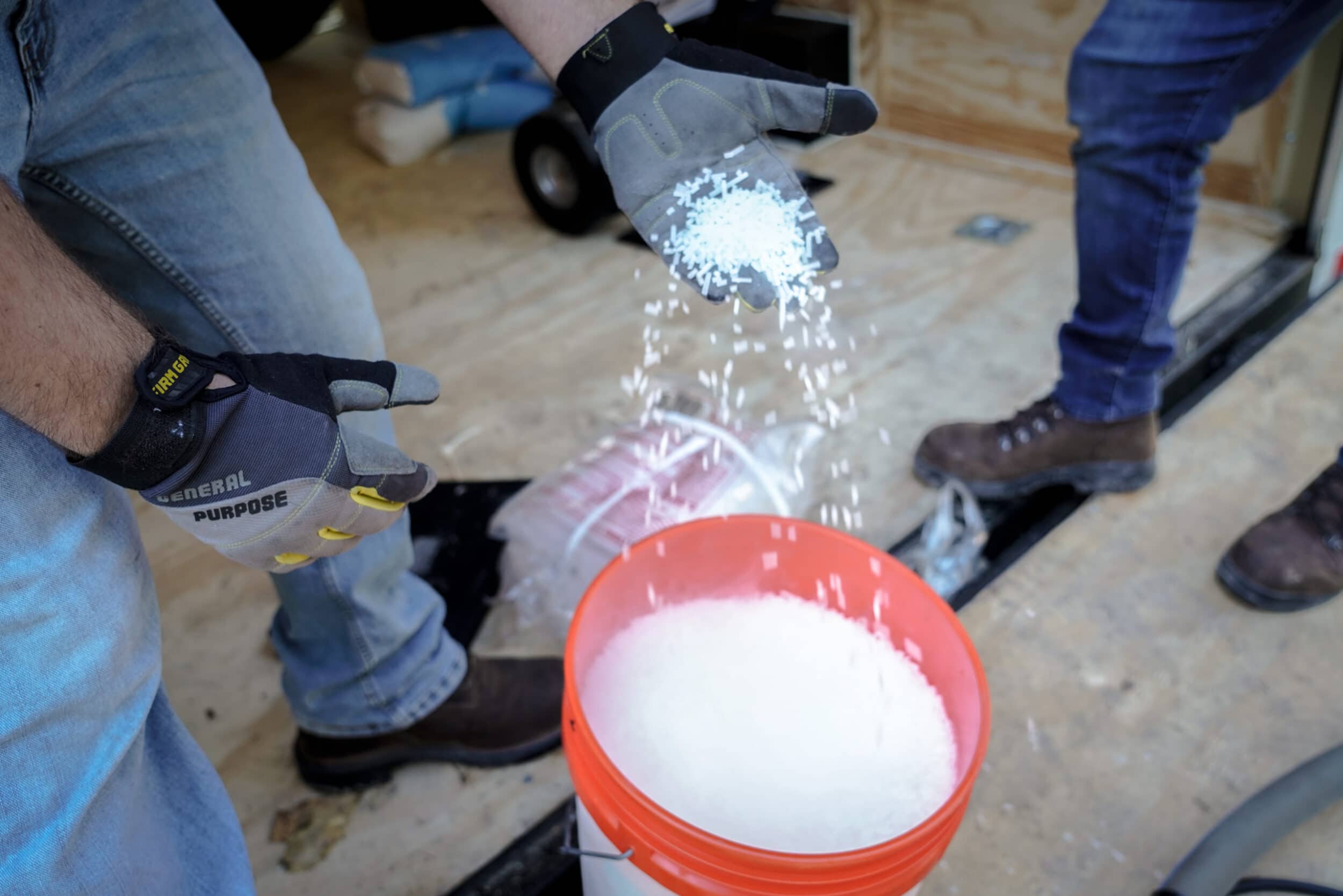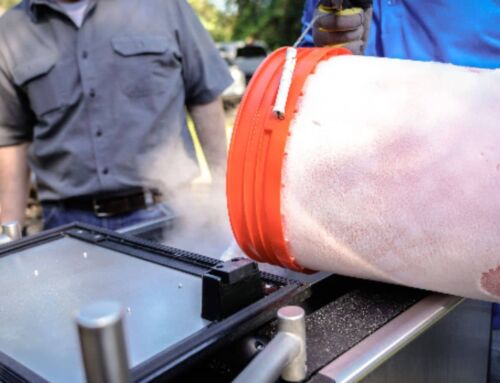
AVOID INJURY WITH PROPER HANDLING
BRRRR! By now you know that dry ice is essentially frozen carbon dioxide, but did you know that the actual temperature of dry ice is around -109 degrees Fahrenheit! If you were to touch dry ice with your bare hands, you would receive nearly instant frostbite! This extreme cold temperature is just one of the reasons that dry ice should be handled with care to avoid accidental injury.
HANDLING DRY ICE SAFELY
Although dry ice is not dangerous when stored and used correctly, there are a number of dry ice blasting safety precautions that should be put into place to ensure that everyone on site is aware of the potential dangers when used improperly.
- VENTILATION AND INHALATION – Dry ice blasting should only be done in well ventilated spaces since, as dry ice melts, it turns into carbon dioxide. If enough of this gas accumulates, a person can lose consciousness and in some cases, die. Open windows and doors to allow fresh air into spaces when blasting indoors. When possible, mechanical ventilation systems can effectively pull out contaminated air and replace it with a fresh air supply. A Carbon Dioxide monitoring device can be worn by workers in these spaces, measuring the exposure to ensure that the exposure limits set by OSHA are followed.
- ATTIRE AND PPE – Keep yourself safe when handling dry ice by wearing insulated gloves when handling dry ice pellets. The Cold Jet dry ice blaster hopper provides insulation for the dry ice, but it is necessary to protect your eyes during active dry ice blasting with safety eyewear. Remember, even a few seconds of contact with dry ice can cause severe burns to your skin. If you do come into contact with dry ice, treat it the same as any heat burn – apply antibiotic ointment to prevent infection and see a doctor if the skin blisters or comes off.
- STORAGE AND DISPOSAL – Dry ice must be stored in well-insulated, but not airtight containers. If dry ice is stored in airtight containers, slow sublimation of the dry ice could cause the container to burst from the pressure of the carbon dioxide. Excess carbon dioxide should be allowed to evaporate in a well-ventilated area that is not in an area where someone could accidentally touch the material before sublimation is complete.
FIRST AID
With proper first aid and medical attention, brief contact with dry ice or exposure to carbon dioxide can be reversed, although it is important to act immediately to avoid lasting effects.
If someone has been overexposed to dry ice or carbon dioxide, first be sure that you are protected from the cold or fumes by wearing proper protective equipment before moving the affected individual to an area with fresh air. It may be necessary to give supplemental oxygen when breathing is labored. For those who have inhaled toxic amounts of carbon dioxide fumes and have lost consciousness, give artificial respiration until medical professionals arrive.
After coming in contact with dry ice in its solid form, seek medical attention immediately if the wound blisters or if the skin comes off, otherwise you can treat with antibiotic ointment and bandage if necessary.
SYMPTOMS OF OVEREXPOSURE
- Dizziness
- Headache
- Nausea
- Rapid breathing
- Shortness of breath
- Increased heart rate
- Eye and extremity twitching
- Lack of concentration
- Visual and hearing disturbances (including blurred vision and ringing in the ears)
TRUST THE PROFESSIONALS
Rely on the team at General Abrasives Co. Inc. for all your dry ice blasting needs. For marine, oil and gas, heavy equipment and more, we offer safe and effective services. Utilizing environmentally responsible cleaning processes, our services can be conducted while the systems are in operation, allowing your processes to remain at optimal efficiency, extending equipment life and maximizing profits.




